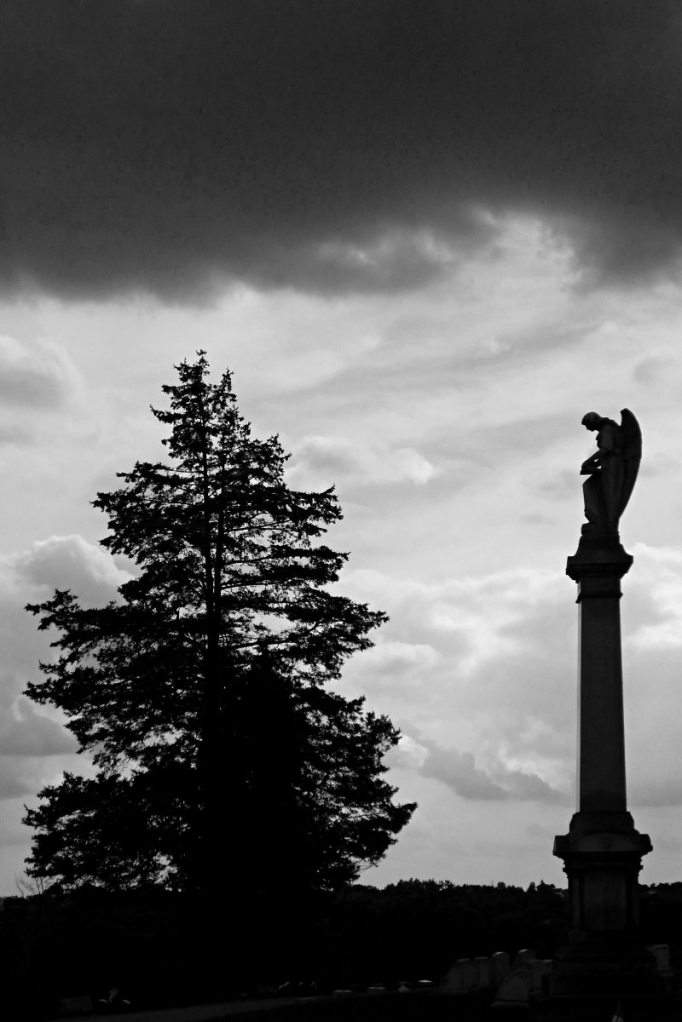An angel keeps watch over a cemetery in Carrick.
-
Ewart Building
The Ewart Building on Liberty Avenue was built in 1891, shortly after Richardson’s courthouse was finished—one of many Romanesque buildings that followed Richardson’s masterpiece in Pittsburgh.
-
Schiller Glocke Gesang und Turn Verein
On the whole, the South Side Flats were East European and the Slopes were German. But a large neighborhood like the Flats has room for diverse microneighborhoods, and we find this “Schiller’s Bell Singing and Athletic Society” on Jane Street. The building is now turned to other uses, but the inscription remains. Pittsburgh and Allegheny used to be full of German singing societies; the Teutonia Männerchor in Dutchtown is the most prominent remnant.
2 responses
-
Rhodes Brothers Concrete
Not quite as artistic as the Wadsworth plates, Rhodes Brothers concrete plates are still attractive designs. This one was set in a driveway in Friendship.
-
Grace Lutheran Church, Troy Hill
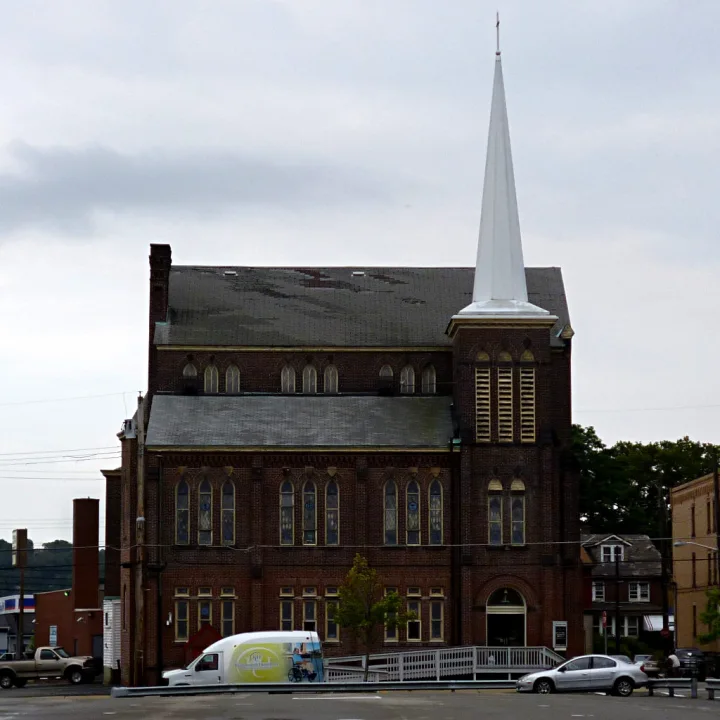
Taller than it is long, Grace Lutheran Church occupies a tiny space in the narrow streets of Troy Hill, a traditionally German neighborhood straddling a narrow hilltop above the Allegheny.
One response
-
Lobby of the Arrott Building
Frederick Osterling’s Arrott Building, the most ornate of the famous Fourth Avenue towers, has a small but gorgeous lobby filled with marble and brass.
-
A New Tower Rises
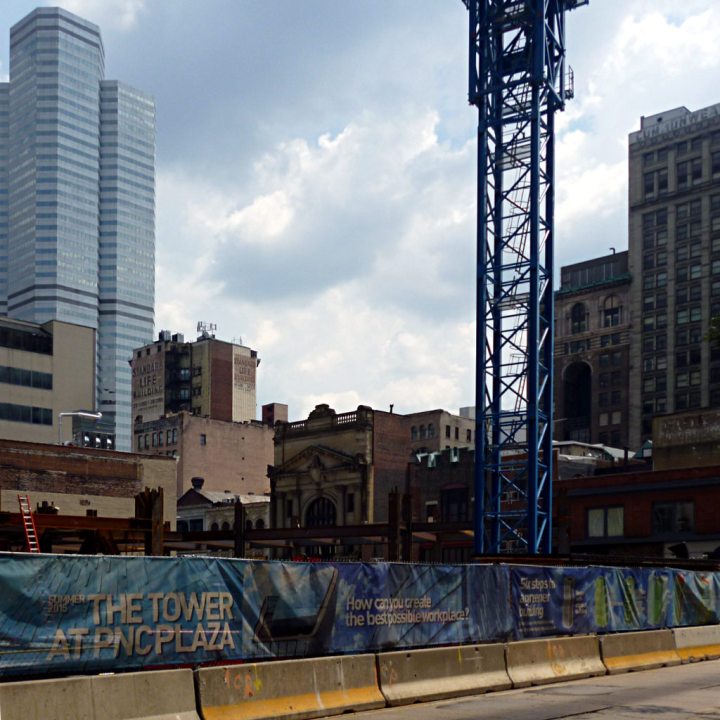
The Tower at PNC Plaza, the biggest skyscraper project in Pittsburgh since the 1980s, has just begun to rise at the corner of Fifth Avenue and Wood Street. Traditionally skyscrapers have grown in a doughnut-shaped area of the Golden Triangle, with the hole in the Fifth Avenue shopping district; but now that much of the shopping has moved elsewhere, the hole may begin to fill in.
-
Harmony
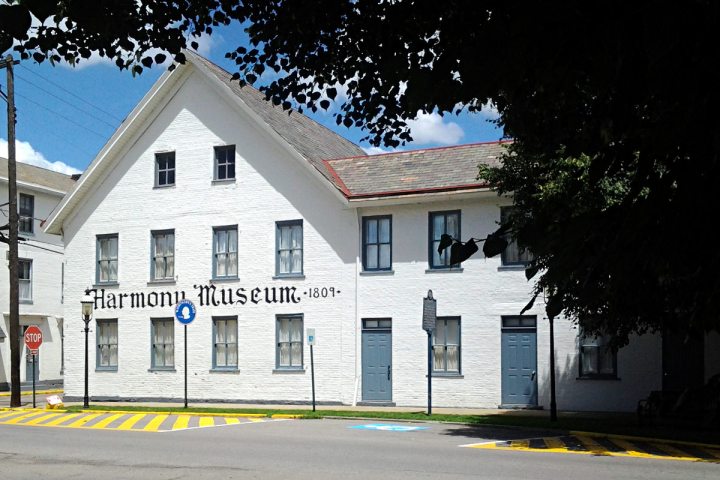
The Harmony Society was one of those colorful cults that flourished in the United States, the universal refuge for religious sects too peculiar for Europe. This particular sect fled Lutheran persecution in Germany, and old Pa Pitt will pause for a moment while his American readers digest the phrase “Lutheran persecution.” The refugees established a communist utopia at Harmony, about thirty miles north of Pittsburgh, in 1804. Ten years later they moved to New Harmony in Indiana (because they thought the climate would be better for wine grapes), but about a decade after that they were back in Pennsylvania, this time at Economy, now “Old Economy Village” in Ambridge.
The Harmonists, like many of the cults of that era, were hard workers, and were more successful in business than they were in establishing a religion. The village of Harmony still stands today, with many of the houses the Harmonists built. There is probably a greater concentration of original log houses in Harmony than anywhere else in western Pennsylvania. Today the town is full of little craft shops, which would doubtless have pleased the Harmonists, even if the morals of the current residents would not have met with their approval.
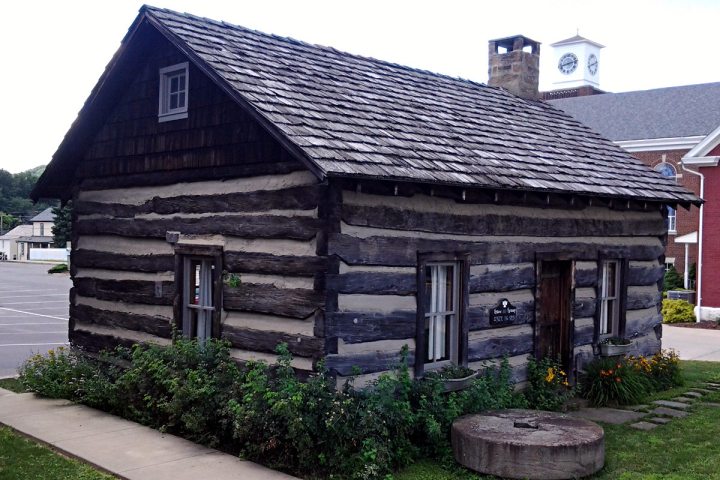



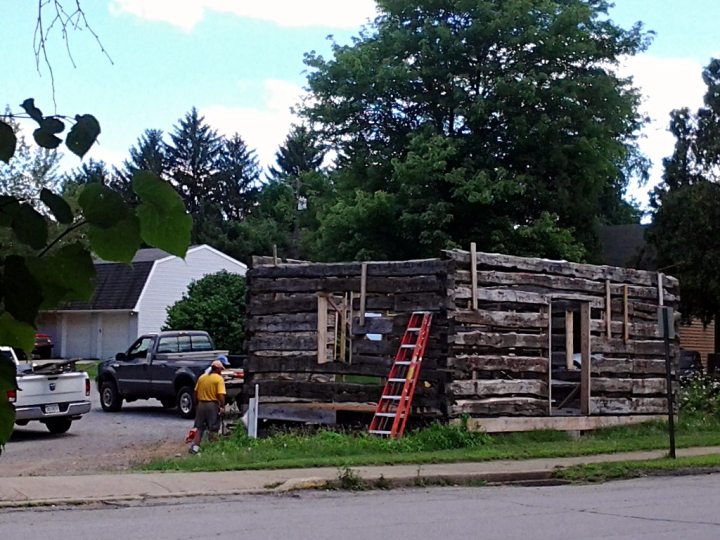
The log house above has been stripped down to the original logs, probably in preparation for restoration.

The Bank of Harmony building dates from after the era of the Harmony Society, but it is a very good design in its own humble way.
3 responses

